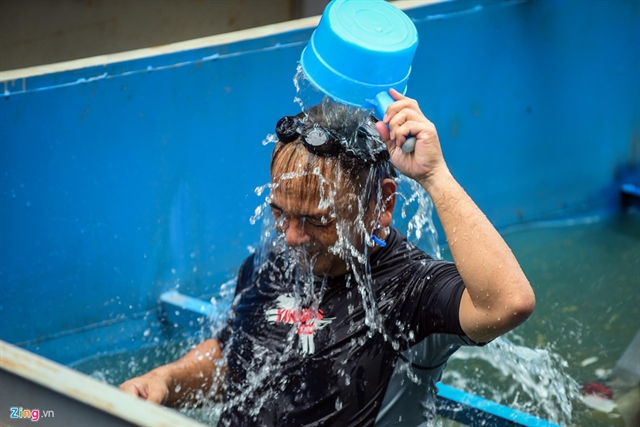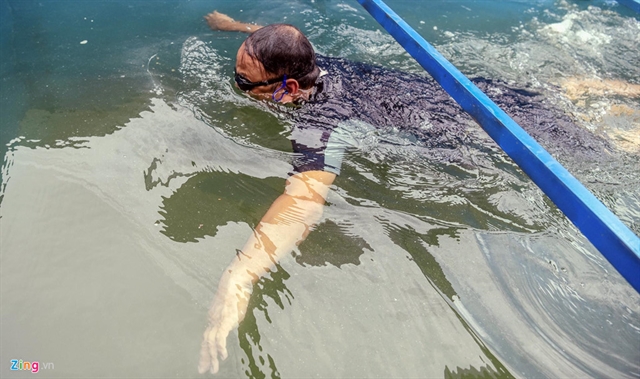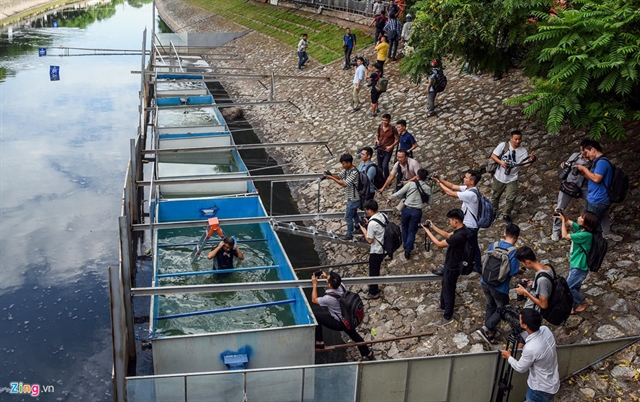 Environment
Environment


|
| Dr Kubo Jun bathes in the treated water. — Photos news.zing.vn |
HÀ NỘI — A Japanese environmental expert on Thursday bathed in a section of Tô Lịch River in Hà Nội to prove the results of piloted water purification technology.
Dr Kubo Jun, technical advisor to the Japan Trade and Environment Promotion Organisation, swam and dove into the tank containing water that was treated by Japanese nano-bioreactor technology.
The water has met Vietnamese standards without using chemicals, according to the organisation.
Earlier in May, the Japan Việt Nam Environment Improvement Joint Stock Company started a pilot project using nano-bioreactor to reduce smell of infamously-polluted Tô Lịch River and West Lake.

|
| The Japanese expert swims in the water after it was treated using nano technology. |
“When I dove into the water and washed my face, I found the water odourless. It felt like I was bathing in a normal fresh water pool,” he told media.
The water purification demonstration zone is located on Hoàng Quốc Việt Street, Cầu Giấy District.

|
| Four tanks are placed in the demonstration zone. |
The zone consists of four tanks. The first reservoir is an anaerobic treatment tank, in which a bioreactor plate for activating anaerobic microorganisms is provided, giving the substrate for microorganisms.
The second tank is an aerobic tank, in particular, a nano aerator for the planning of aerobic microorganisms.
The third is a tank for decomposing organic mud. Inorganic mud will accumulate at the riverbed.
The fourth tank is for the post-treatment water which has reached Vietnamese standards and can be used as domestic or bath water.
Dr Tadashi Yamamura, UN environment expert and President of the Japan Environment and Trade Promotion Organisation said the nano-bioreactor has proved its worth in similar cases in Japan, China and the US and believed their technology could be of use in Việt Nam after two years of surveying.
“In Việt Nam, one of the biggest problems with the Tô Lịch River is the thick sludge at its bed that is the source of the smell, and this could be solved by the nano bioreactor,” he said.
The equipment was placed on the bed of a 300-metre section of the river.
The device creates and diffuses nano-gas streams into the surrounding water to stimulate microorganisms, which helps to release oxygen and decompose the mud in the riverbed, making the water cleaner. — VNS




